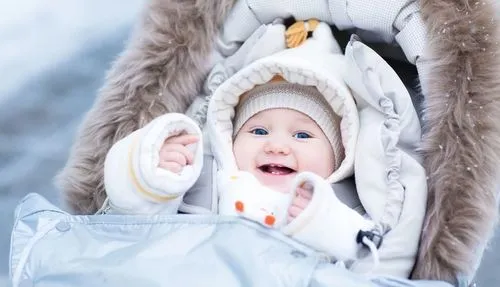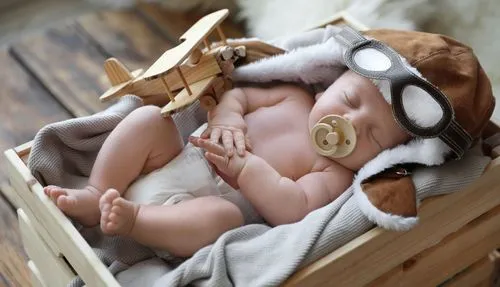Baby-proof your house and garden: essential tips for child safety
April 03, 2023
Katka

As a parent, your number one priority is the safety and well-being of your child. Ensuring that your home and garden are baby-proofed is a vital aspect of creating a secure environment for your little ones to thrive. From the moment they begin to crawl, children are curious and eager to explore their surroundings, making it all the more important to take necessary precautions.
In this blog post, we'll delve into a comprehensive guide that shares essential tips and hacks to help you baby-proof your house and garden effectively. Our goal is to provide you with the tools and knowledge to create a safe, nurturing, and happy space where your child can grow, learn, and develop in the best possible way. With a combination of practical measures and constant vigilance, you can ensure that your home is a haven for your young ones, allowing them to explore with confidence and giving you peace of mind.
Where do most accidents happen and why
The majority of accidents involving children occur in the living room or dining area, with the most severe injuries typically happening in the kitchen and on the stairs. Children under the age of four are the most vulnerable, with boys being more prone to accidents than girls. Lack of experience and inadequate development play a significant role in children's failure to perceive danger, making them unaware of the consequences of many new situations they encounter. Their curiosity drives them to explore and try everything, exposing them to various risks.
Most common accidents
Falls
Falls are one of the most frequent causes of child injuries at home. Most of these incidents are minor, involving trips or stumbles. However, falls from higher surfaces, such as falling off the bed, down the stairs, or out of a stroller, can lead to more severe consequences. Installing safety gates at both the top and bottom of staircases is essential, and any uneven or damaged flooring should be repaired to minimize tripping hazards. Additionally, it's crucial to keep furniture away from windows to prevent children from climbing and falling.Cuts and lacerations
Another common injury among young children is cuts and lacerations. Eliminating any sharp edges and objects within their reach is essential to preventing such accidents. Glass in interior spaces can be particularly dangerous, and it's advisable to use tempered or covered glass to reduce the risk of injury.Burns and scalds
Warm beverages are a significant cause of burns in children under five years old. Their skin is more sensitive than that of adults, and a hot drink can scald a child up to 15 minutes after it is made. To avoid such accidents, never hold a child and a hot beverage simultaneously, and always use coasters or place hot drinks away from the edges of tables and countertops. Be cautious with tablecloths that a child could pull, causing a hot drink to spill on them.Poisoning
Accidental poisoning can occur due to various substances, including medicines, cleaning products, chemicals, and cosmetics. These hazardous items should be securely stored in locked cabinets, out of a child's reach. Take particular care with dishwasher and laundry detergent tablets, as their bright colors might attract children who mistake them for candy.
"Prevention is better than cure."
Choking and Suffocation
Young children are at risk of choking or suffocating on plastic bags, sacks, and small objects that they can accidentally swallow. Ensure that all bags and containers with small parts are out of their reach. Additionally, some indoor plants can be toxic, so it's important to keep them away from curious little hands.Drowning
Children can drown in water less than 10 centimeters deep, so never leave them unattended near any water sources, whether it's the bathtub at home or a pond in the garden. Pools and garden ponds should be properly fenced off to prevent access. Avoid leaving older siblings in charge of young children near water unless they are responsible adults.Strangulation
Ropes, cords, and cables pose a strangulation risk to young children. Ensure that such items are kept out of their reach and secured properly. Even seemingly harmless objects like window blinds with cords can be dangerous if a child becomes entangled.
Baby-proofing the house
When it comes to raising a child, safety within the home is an immediate priority. A well baby-proofed house provides an environment where your child can explore, learn, and play without undue risks. As the saying goes, 'prevention is better than cure,' and baby-proofing the house is about proactively eliminating potential hazards. From securing electrical outlets to installing safety gates and locking cabinets, we'll guide you through the process of turning your home into a secure playground for your child.

1. Secure electrical outlets and cords
Use outlet covers to prevent your baby from sticking their fingers or objects into the sockets. Keep electrical cords out of reach or hidden behind furniture to prevent the risk of strangulation or electrocution.
2. Install safety gates
Safety gates are crucial to block off dangerous areas like stairs, kitchens, and other rooms with potential hazards. Make sure the gates are sturdy and meet safety standards.
3. Secure furniture
Anchor heavy furniture like bookcases, dressers, and TVs to the wall to prevent them from tipping over. Use corner guards on sharp edges to protect your baby from injuries.
4. Lock cabinets and drawers
Install childproof locks on cabinets and drawers containing cleaning supplies, medications, and other hazardous materials. Keep all dangerous items out of reach.
5. Secure windows and balconies
Make sure windows have locks and safety bars to prevent children from falling. If you have a balcony, secure it with a suitable railing and a strong lock on the door.
6. Secure the fireplace
If you have a fireplace, install a protective grate to prevent children from accessing the fire.
"A well baby-proofed house provides an environment where your child can explore, learn, and play without undue risks."
Baby-proofing the garden
A garden can provide an excellent setting for children to engage with nature, enjoy outdoor activities, and stimulate their curiosity. However, just like the house, ensuring your garden is baby-proofed is crucial. Necessary steps include securing the garden perimeter, removing toxic plants, and implementing safety measures around pools and ponds. This section aims to assist you in creating a garden where your child can safely play under your watchful eye, confident in the knowledge that potential hazards have been effectively managed.

1. Secure the perimeter
Install a fence or barrier around your garden to keep your child safe from wandering off. Ensure there are no gaps or holes where your child could slip through.
2. Remove toxic plants
Research which plants in your garden are toxic and remove them to avoid accidental ingestion by your child.
3. Pool and pond safety
Install a safety fence around pools and ponds with a self-closing, self-latching gate. Always supervise your child around water, even if they can swim.
4. Soften play areas
Use a soft surface like rubber mulch, wood chips, or sand in play areas to reduce the risk of injury from falls.
5. Store garden tools safely
Keep tools, chemicals, and other hazards securely stored in a locked shed or garage.
6. Keep an eye on the animals
If you have pets, make sure your dog or cat is familiar with your child and supervise interactions between them to avoid unintentional accidents.
FAQs
1. When should I start baby-proofing my home and garden?
It's never too early to start baby-proofing your home and garden. Begin the process before your baby starts crawling, usually around six months old.
2. How can I prevent my baby from climbing furniture?
Keep furniture away from windows and other potential climbing hazards. Install furniture straps to secure furniture to the wall and remove any items that may entice your child to climb.
3. What should I look for when choosing a safety gate?
Choose a safety gate that meets safety standards, is sturdy, and easy to install. Avoid using pressure-mounted gates at the top of stairs.
4. What are the common hazards in a house for a child? Common household hazards for children include falls, cuts, burns, poisoning, choking, suffocation, and even drowning. Areas of concern are unsecured stairs, unprotected outlets, unsecured furniture, accessible cleaning products, small ingestible objects, open water sources, and reachable cords or ropes.
Conclusion
Baby-proofing your house and garden is a crucial step in providing a safe environment for your child. By following the tips and guidelines outlined in this post, you can ensure that your home and garden are secure and free of potential hazards. Keep in mind that supervision is still vital, and no amount of baby-proofing can replace a watchful eye. So, take the time to create a secure space for your little one and enjoy the peace of mind that comes with knowing they're safe and protected.
Remember to regularly update and reassess your baby-proofing measures as your child grows and becomes more mobile. As they learn to walk and climb, new hazards may arise, and your precautions will need to adapt.
Continue reading...
Show all articlesCopyright & trademark notices
Apple, the Apple logo, and iPhone are trademarks of Apple Inc., registered in the U.S. and other countries and regions. App Store is a service mark of Apple Inc. Mac App Store is a service mark of Apple Inc. Google Play and the Google Play logo are trademarks of Google LLC. Windows® and the Windows logo are either registered trademarks or trademarks of Microsoft Corporation in the United States and/or other countries. Linux® is the registered trademark of Linus Torvalds in the U.S. and other countries.


